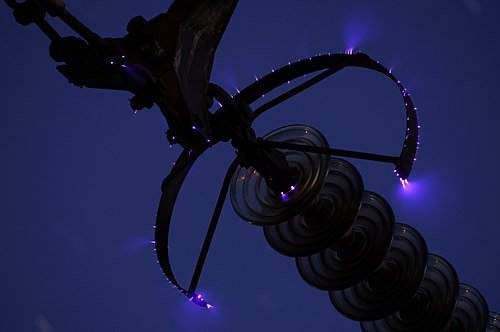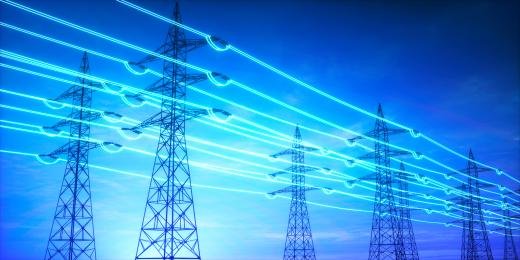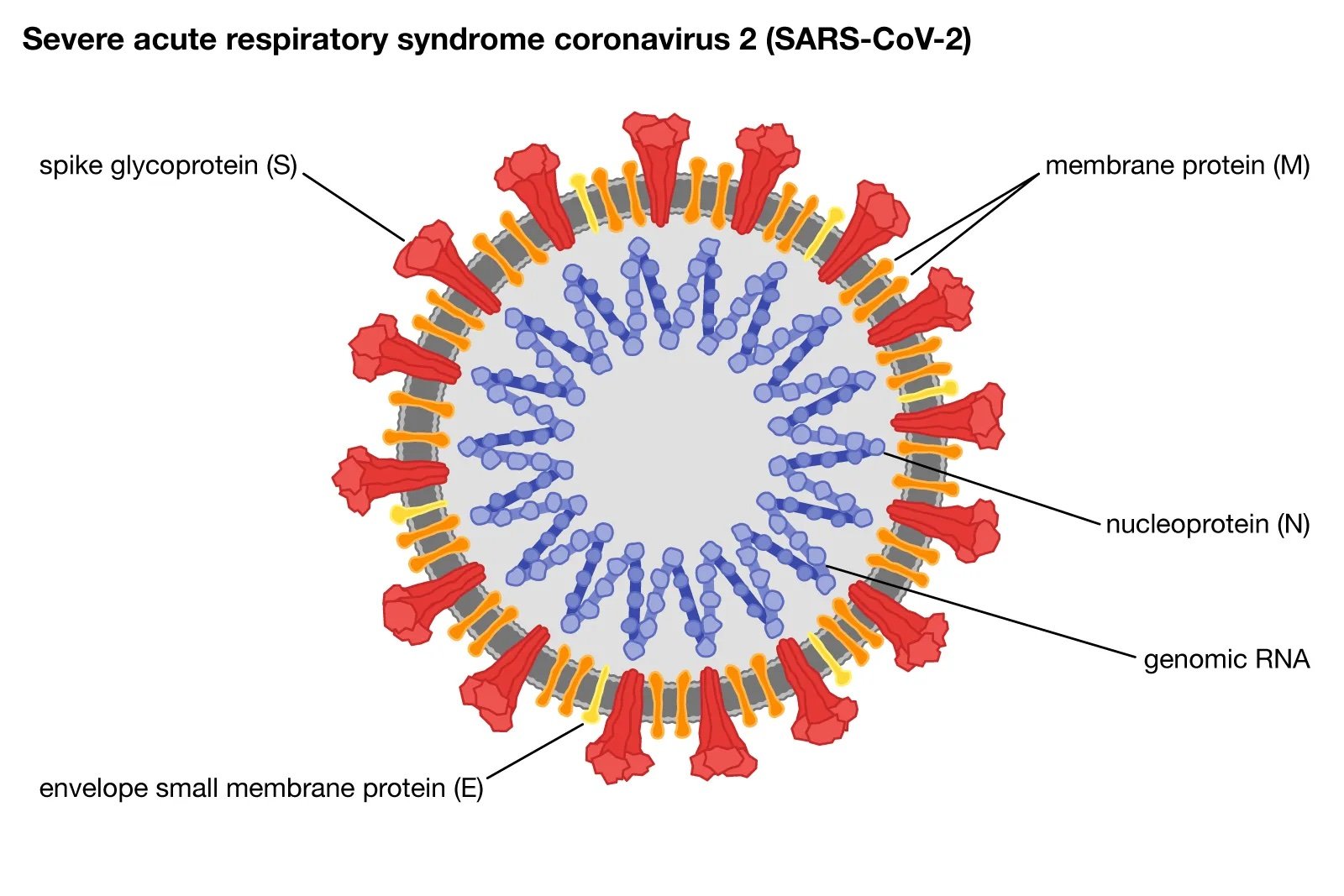What is Corona Discharge?
Corona discharge is like a glowing halo that forms around high-voltage electrical conductors—like the wires carrying electricity overhead. Imagine a balloon that gets charged by rubbing it on your hair: just as the static electricity can create a small spark or attract hair, a corona discharge occurs when a conductor at a high voltage interacts with the air around it. When the voltage reaches a certain level, the air ionizes and can conduct electricity, leading to this visible phenomenon often seen as a bluish glow.


How Does It Work?
When a conductor has a high voltage, the electric field around it can become intense. If this electric field is strong enough, it can cause the air (or another gas) nearby to become ionized, creating a conductive region.
To simplify, think of the conductor as a metal straw. When you drink a drink with a straw, the liquid moves through it. In corona discharge, instead of liquid, we have electricity moving through air (which acts as a kind of “fluid”). Here’s a step-by-step breakdown:
- High Voltage: When the voltage on the conductor increases and reaches a certain level, it starts to affect the air around it.
- Ionization: The strong electric field around the conductor causes the air molecules nearby to become charged (this is called ionization).
- Ionization Start: If a high-voltage conductor has sharp points or edges, these areas create a stronger electric field.
- Creation of Plasma: Once the air is ionized, it acts more like a conductive material, allowing the electric charge to move more easily through it. This ionized air forms a kind of ‘plasma’.
- Glow Formation: The ionization of air releases energy, which is visible as a bluish glow.
- Electric Field Interaction: Electrons in the air get energized, knocking them away from their atoms and creating positively charged ions and free electrons.
- Chain Reaction: This can start a chain reaction—a few electrons can create more, leading to a “corona” effect that adds to the glow.
- Outward Movement: The electrons and positive ions start moving: electrons move toward the conductor (because they are attracted to positive charges), while the positive ions wander away.
Types of Corona Discharge
There are two types of corona discharge, named based on the charge on the conductor:
- Positive Corona:
- Arises from a positively charged conductor.
- It appears uniform and emits a bluish glow, but generates less ozone, which is a type of oxygen molecule that can help purify air.
- Negative Corona:
- Occurs from a negatively charged conductor.
- It creates a non-uniform discharge, sometimes looking like tufts or branches, and generates more ozone. This can make negative corona useful for applications needing ozone, like water purification.
Where Does It Occur?
This discharge is mostly seen on high-voltage power lines. If a conductor has sharp points or corners, the electric field around those areas is stronger, which makes corona discharge more likely to happen at those spots.
Impact of Weather on Corona Discharge
Weather conditions greatly influence corona discharge. For instance:
- Humidity: When the air is wet (like during rain or fog), it can enhance the effect. Water droplets on the conductors can create small vibrations, leading to more intense corona discharge.
- Wind: Wind can also play a role by shaking the power lines, which may increase the likelihood of the corona effect.
Practical Applications
While corona discharge can waste electrical energy (important for electric utilities), it also has valuable uses:
- Air Purifiers: Help to remove contaminants in the air.
- Photocopiers: Used in the electrostatic copying process.
- Ozone Generators: For sanitizing air and water.
- Static Charge Neutralization: Helps devices like printers by eliminating unwanted electricity buildup.
Issues and Limitations
Despite its uses, corona discharge also has downsides:
- Energy Loss: It can cause significant power loss in electric lines.
- Damage to Equipment: The ozone created can corrode materials and affect the insulation of electrical devices.
- Audible Noise: This phenomenon can create unwanted sounds or even interfere with radio signals.
Consequences of Corona Discharge
While corona discharge is an interesting phenomenon, it can be problematic:
- Power Loss: The glow itself indicates energy is being wasted. This translates into power loss for electricity providers.
- Interference: The soft crackling sound produced by corona discharge can disrupt radio and television signals.
- Vibration and Aging: Constant corona discharge can cause wear and tear on power lines. The vibrations from the discharge and the wind can reduce the lifespan of these lines.
Environmental Impact
Another concern is that the corona discharge can convert oxygen in the air into ozone. While ozone is beneficial high in the atmosphere, at ground level, it can harm living organisms, especially near power lines.
Corona discharge is a fascinating but tricky effect where high-voltage electricity interacts with the air, leading to energy loss and potential hazards. Understanding it helps in making power lines safer and more efficient. Think of it as a reminder of how electricity behaves in various conditions—like a dance between energy and the environment.
Ultraviolet (UV) and Thermal Cameras: High-Tech Solutions for Corona Discharges

When it comes to maintaining high-voltage power lines, especially those extending over 10 kilometers, the challenge is significant. Electricity infrastructure companies, particularly in Europe, rely heavily on aerial (above-ground) power networks, which are exposed to the elements and require routine inspections to ensure they operate efficiently 24/7. Countries like Denmark and the Netherlands have begun to bury some lines underground for aesthetic reasons, but this comes with a larger price tag despite lower maintenance costs.
With an extensive network exceeding 300,000 kilometers in Europe alone, effective inspection methods are crucial. In contrast, regions like the Americas and Asia, including Brazil and China, often use long-distance high-voltage cables supported by towers. Advanced technologies, namely Ultraviolet (UV) and thermal cameras, have emerged as the best tools for detecting “corona discharges,” which can indicate problems along these power lines.
How Do UV and Thermal Cameras Work?
Ultraviolet (UV) Cameras
- Functionality: UV cameras detect corona discharges in the range of 200 to 400 nanometers (nm). To avoid interference from sunlight, they can operate effectively between 240 and 280 nm.
- Usage Scenario: They are especially useful during day conditions because corona discharges emit UV light. However, the signals are often weak, so high sensitivity and the ability to adjust exposure time are essential for capturing clear images.
Thermal Cameras
- Functionality: These cameras work within the 8 to 10 micrometer (µm) range and detect variations in temperature. For instance, warmer objects (like a human body at about 37°C) appear brighter against a cooler background.
- Usage Scenario: Thermal cameras are great for identifying overheated components such as damaged insulators or potential short circuits, making them versatile for both day and nighttime inspections.
Combining Technologies for Predictive Maintenance
Using both UV and thermal cameras together — and sometimes with standard visible light cameras — provides a comprehensive approach to predictive maintenance in electrical lines. This combination enables inspectors to identify a wide array of potential issues, like problems with insulators and solder joints.
Main Features:
- User-Friendly Interfaces: Modern inspection systems are designed for ease of use, allowing operators to handle them efficiently.
- Image Processing: Innovations in image processing enhance the quality of the captured images, which is crucial for accurate diagnosis.
Advancements in Technology:
- Camera Types:
- UV cameras incorporate image intensifiers along with CMOS technology for better sensitivity.
- Thermal cameras utilize uncooled microbolometer technology to capture temperature changes effectively.
- SWaP Technology: Improvements have led to smaller, lighter equipment that can be fitted onto drones (UAVs) or helicopters, broadening where and how inspections can be conducted.
Chemical polarization effects of electromagnetic field radiation from the novel 5G network deployment at ultra-high frequency
Health hazard of deploying 5G Network at Ultra High Frequency >=20 GHZ

Related Article:
A journalist working for the non-profit organization Muckrock made a bizarre discovery after requesting documents from the US government through the FOIA. Indeed, as part of an ongoing investigation about Antifa and white supremacist groups, the journalist sent a request to the Washington State Fusion Center, a Department of Homeland Security, which specializes in counter-terrorism, detecting criminal activity, disaster planning, cyber-security and other threat assessments.
Along with standard documents such as emails, intelligence briefings, and bulletins, the journalist received a bizarre filed named “EM effects on human body.zip”.
One document describes the effects of “psycho-electric weapons” including “forced memory blanking”, “forced rigor-mortis”, and even “forced orgasm”.

Another document explains biomagnetic fields and brainwaves (Alpha, Beta, Delta, etc.), two concepts that are extremely important in MKULTRA and Monarch mind control. [https://vigilantcitizen.com/hidden-knowledge/origins-and-techniques-of-monarch-mind-control/ ]

The final document describes how shady organizations can conduct “remote mind control” operations through mobile phone networks, trucks disguised as communication vehicles, and “Black” helicopters.

Related Article
Connect the dots..

Ref:
Exosens, Wikipedia, Britannica,
Also Read:
